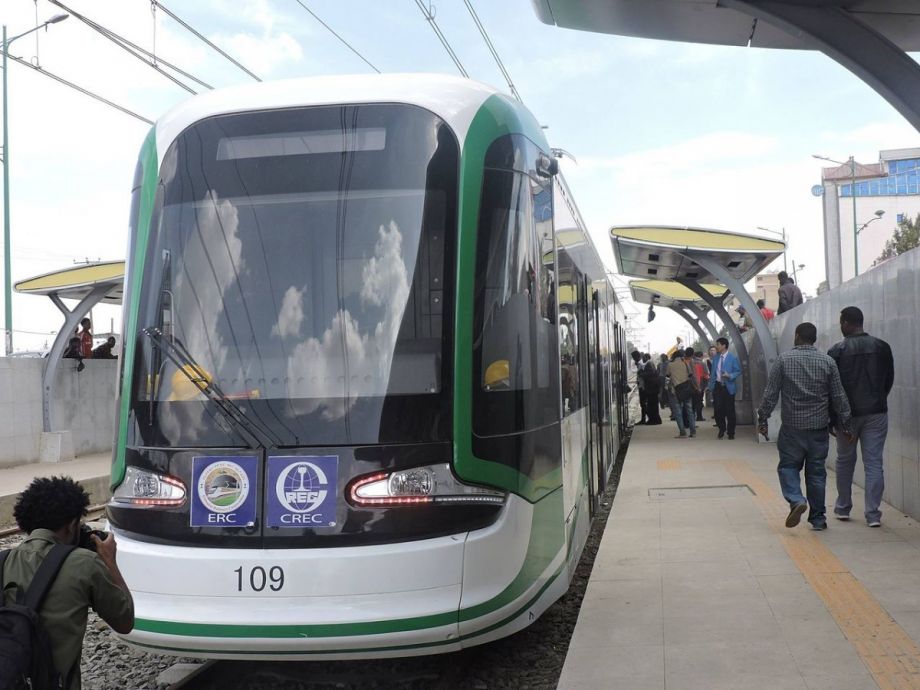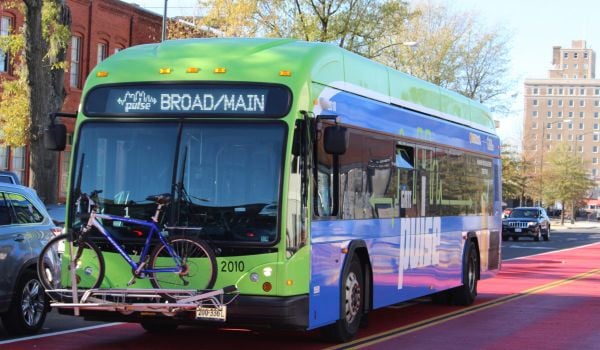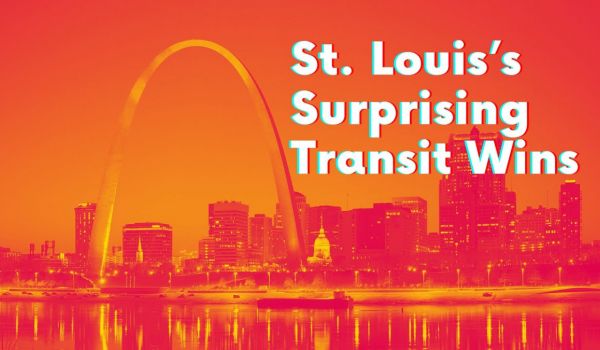Our weekly “New Starts” roundup of new and newsworthy transportation projects worldwide.
Not a week went by this year when some city somewhere wasn’t accepting bids, awarding contracts, breaking ground or cutting ribbons on new bus or rail projects. But there were also weeks where either elected officials or the public had second thoughts about some projects. As the year comes to an end, we took a look at four of the most noteworthy mass transportation developments, both starts and stops.
Rail Transit Comes to Sub-Saharan Africa, Courtesy of China
While it may seem that the news out of sub-Saharan Africa is dominated by civil wars and strife, some countries in the region are making progress with their infrastructure.
This year saw the opening of the first light metro system in sub-saharan Africa in Addis Ababa, the capital of Ethiopia. The two-line LRT network underwent nine months of testing before opening to the public in September. A Chinese rail construction firm, backed by Chinese government financing, built the Addis Ababa light metro.
Not long after that, the Ugandan government announced that it had entered into an agreement with the Chinese government where a Chinese firm would build the first of several proposed LRT lines connecting the capital of Kampala with surrounding communities. Around the same time, the Ugandan government also announced the launch of a commuter rail pilot project in Kampala that would run for at least one year.
China Civil Engineering Construction Corporation is also building the first of several LRT lines proposed for Lagos, Nigeria’s largest city. The Chinese will also supply the rolling stock after plans to use rebuilt Toronto subway cars were scrapped. Lagos’ first line is scheduled to open in 2017, and work on the second line, which the national government will finance, was authorized this past fall.
The FAST Act Giveth and the FAST Act Taketh Away
Just in time for Christmas, Congress approved and President Obama signed into law the first multi-year transportation funding bill in a decade. Lots of ornaments were hung on this Christmas tree called the FAST (Fixing America’s Surface Transportation) Act, and several of the biggest ones brought joy to the hearts of urbanists and advocates for multi-modal transportation.
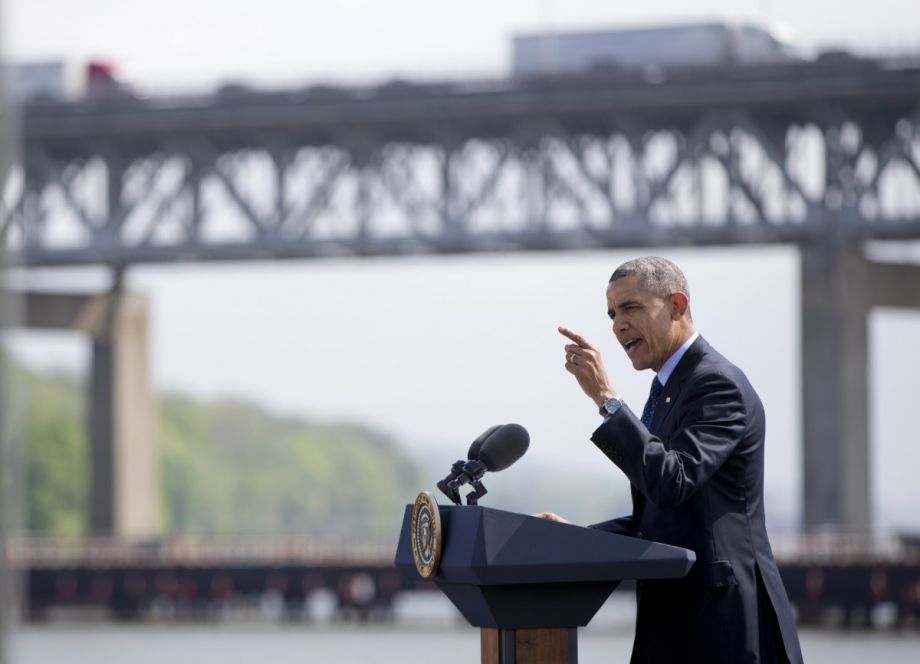
President Barack Obama speaks in Tarrytown, N.Y. in May about the need for a 21st century transportation infrastructure. (AP Photo)
Rob Ford’s Ghost Haunts Toronto
Former Toronto Mayor Rob Ford ran for office on a platform that opposed an extensive network of light-rail lines the city had planned with the support of Metrolinx, the transportation planning agency for the Greater Toronto region, claiming it harmed the interests of motorists. Instead, he pushed for new subway extensions, calling the light-rail plan unnecessary and saying “the people want subways.”
Ford mostly lost the fight with Toronto City Council over the light-rail plan, but the city councillors representing Scarborough, the eastern Toronto district that was the heart of Ford’s power base, apparently agreed with the former mayor; during the debate over what to do with the aging Scarborough RT line, they argued that a proposal to replace it with a light-rail line that would extend a line under construction along Eglinton Avenue turned their constituents into “second-class citizens.” The council as a whole ultimately agreed with them, voting to substitute an extension of the Bloor-Danforth subway line on a new alignment for the light-rail route.
It turns out this decision is causing as many headaches as the light rail vs. subway fight. Where the province of Ontario offered to pay the full cost of the light-rail route, the city will have to make up the difference between that amount and the much greater cost of the subway, and some of the people who might stand to benefit most from the line — Toronto developers — object to the way the city proposes to raise the money, namely by adding a citywide development fee and a property tax surcharge.
Gov. Hogan Feels Purple, Baltimoreans See Red
Maryland urbanites knew what Governor Larry Hogan’s election to succeed Martin O’Malley would mean; he made it plain that he was going to throw his predecessor’s transit-heavy state transportation program out the window. But when both suburban Washingtonians and Baltimoreans protested, the governor opted to review their favored rail projects before reaching a decision.
That decision took him most of the year to reach, and upset even more Baltimoreans. He opted to save the Purple Line light rail transit project in Montgomery and Prince George’s counties, but kill Baltimore’s proposed crosstown Red Line. Coming as it did on the heels of a PR release touting “transportation benefits for every county in Maryland” that included a map from which Baltimore City was missing, the decision added injury to insult.
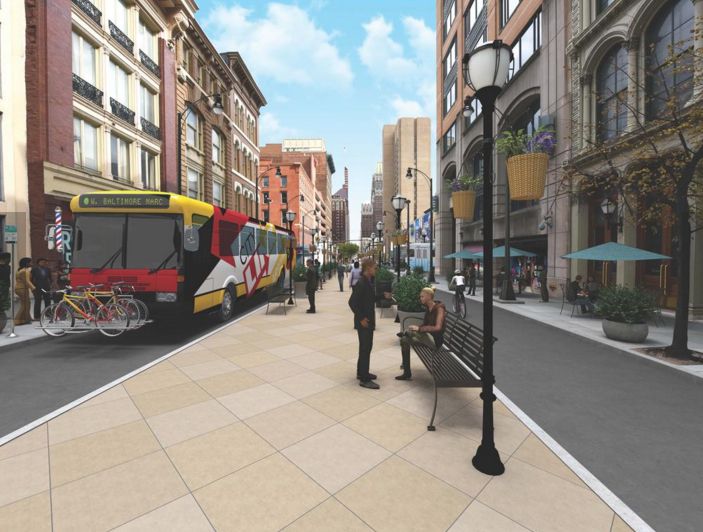
Rendering of Baltimore street with dedicated bus lane (Credit: Maryland Department of Transportation)
Perhaps recognizing the damage done, Hogan soon afterward unveiled a radical restructuring of Baltimore’s chaotic local bus network that featured a downtown busway and promised faster service to more of the city. But that wasn’t enough to mollify some Baltimoreans: Last week, The Baltimore Sun reported that the NAACP Legal Defense and Education Fund and the ACLU of Maryland have petitioned the U.S. Department of Transportation to launch an investigation into Hogan’s decision, claiming that the shifting of money from the Red Line to highway projects elsewhere in the state was merely the latest in a long line of discriminatory acts that deprive African-Americans of transportation benefits.
Know of a project that should be featured in this column? Send a Tweet with links to @MarketStEl using the hashtag #newstarts.
The Works is made possible with the support of the Surdna Foundation.

Next City contributor Sandy Smith is the home and real estate editor at Philadelphia magazine. Over the years, his work has appeared in Hidden City Philadelphia, the Philadelphia Inquirer and other local and regional publications. His interest in cities stretches back to his youth in Kansas City, and his career in journalism and media relations extends back that far as well.
Follow Sandy .(JavaScript must be enabled to view this email address)


